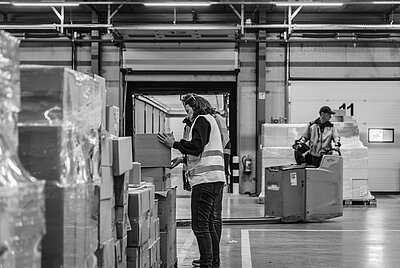The Bank of England recorded a decline in shoppers’ willingness to use cash during the pandemic, not only because of an overall slowdown in in-person retail, but also over “concerns about the risk of banknotes transmitting the virus”. In March 2020, when many countries first went into lockdown, withdrawals from UK cash machines (ATMs) were down 60% on the same period the previous year. Demand increased later in the year but, by autumn, it was still around 40% lower than it had been in autumn 2019.
As the FT reports, there has also been similar trend in many European countries, where cash use has declined significantly during the pandemic, for instance in Spain, where cash volumes dropped as much as 90 per cent.
The benefits of a cashless society
We were already moving towards a largely cashless society thanks to a growing number of payment options, including phone- and wearable-based digital wallets. By early 2020, Apple Pay was used for 5% of global payments, and was predicted to double that figure by 2025. If anything, those figures could be conservative. According to metrics from Blackhawk Network, 38% of US consumers used digital wallets before the pandemic, but by autumn that number had risen to 55%. In Europe, this trend is also continuing. Since the Covid pandemic started, 27 percent of small businesses have seen an increase in contactless payment over cash. Germany, which has historically favoured cash over credit has seen its contactless payments grow from 35 to to 50 percent in 2020.
Apple is far from the only player in this growing market. Google, Samsung, Amazon, WeChat and Alibaba Group each have their own app-based wallets. This is good news for retailers as, while they give consumers greater choice for friction-free, reduced-risk shopping, they are built on a standard platform, which makes use of existing in-store card readers to transact with users’ phones, watches and even payment jewellery.
Digital wallets have an additional benefit in the age of coronavirus: more generous payment limits. Most card issuers only authorise PIN-free payments up to a modest limit, forcing consumers to risk infection by touching a recently used keypad if they are buying anything more expensive. With wallets, and app-linked cards from fintech start-ups, it is often possible for consumers to set their own limit, minimising the number of times they need to interact with in-store hardware, and reducing responsibility – on the retailer’s part – for keeping the reader bio secure.
The next step
Consumers may be slow to return to in-person shopping and retailers will only combat this if they put themselves in shoppers’ shoes, and consider how they can reduce the time they are in store, without reducing their spend. It is a big ask, but apps could help, by cutting the amount of time they need to wait in a socially distance queue, or obviating the need to visit a cash desk at all.
Once consumers get used to shopping like this, it is almost certain they will demand similar treatment from other big-name retailers and, eventually, cash could fall out of favour altogether. Sweden is heading towards becoming the world’s first cash-free society. In 2018, just 2% of all transactions there were conducted using cash. China isn’t far behind. By November 2020, mobile payments were responsible for four in every five transactions.
Both Marks & Spencer and Sainsbury’s have introduced app-based payment in all or some of their UK supermarkets, and Amazon has done the same with its Go Grocery stores in the US.
So, is cash a risk?
Regardless of the measures retailers put in place, some shoppers will choose to continue paying with cash, at which point, the worry – in terms of the chance of infection – may be felt more by the retailer and their staff.
Fortunately, there is good news here. The Bank of England commissioned a study into the longevity of the Covid-19 virus on both paper and polymer currency and found that “the virus does not survive at high levels for very long on banknotes. A few hours after infection, even at high doses, the levels and therefore associated risk of infection appear low. We also conclude that there is no material difference in the viability of the virus on polymer and paper banknotes. Further, the survival of virus on banknotes is no greater — indeed it appears potentially less — than on reference surfaces representative of the many surfaces that people may come into contact with in their routine life.”
2021 will bring its own challenges and it seems that the onus is on retailers (again) to keep all bases covered to keep the customer happy. It is on its way out but you may have to have an option for cash purchases for a little while yet, even with everyone more germ-aware.
For advice on getting your retail environment in top shape for consumers or for more info on our Coronavirus packages to help in store, speak to our team on +31 (0) 88 494 20 80 or email us at online@worldpack.eu


